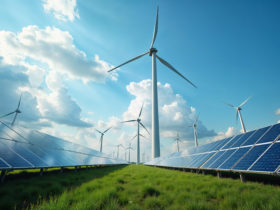Natural gas prices have been on an uptrend since Russia, which was the largest exporter of the commodity in 2021, invaded Ukraine in late February 2022.
The invasion has changed the global geopolitical situation and put pressure on India’s energy security. India imports most of its natural gas requirements and high gas prices have dented India’s imports as Europe is paying top dollars to import most supplies ahead of the winter.
As a result the Ministry of Petroleum and Natural Gas increased the price of natural gas by 40% to an all-time high of $8.57/mmbtu (metric million British thermal unit) for the second half of the current fiscal, based on the administered pricing formula1 (APM). This is because domestic gas prices are linked to global benchmarks and higher global benchmark prices mean that domestic prices would also rise.
The latest increase in gas prices is after a 110% increase already applicable for the first half of FY23, according to CRISIL rating agency. The APM gas is supplied largely to compressed natural gas (CNG) and domestic piped natural gas (PNG) consumers, who contribute to 50% and 10% of city gas volume, respectively.
The price for the remaining 40% of city gas volume, which is supplied to industries, have also surged and remain elevated due to the Russian-Ukraine conflict.
Over the past 12 months, the average price of liquefied natural gas (LNG) contracts, benchmarked against crude oil prices, rose about 45% to $14.5-15.0 per mmbtu, while spot LNG prices have surged about 150% to $38-40 per mmbtu.
The rating agency said that sustenance of these high gas prices will moderate India’s city gas consumption volume growth to 8-10% this fiscal versus an earlier projection of 20-25%. CRISIL Ratings’ analysis of five large city gas distributors, which account for almost 70% of the industry’s volume, showed.
“Elevated gas prices are expected to reduce demand for industrial PNG by 10-12% this fiscal, as price-sensitive industrial consumers switch to alternative fuels such as propane and fuel oil,” Naveen Vaidyanathan, Director, CRISIL Ratings.
He added that demand for residential PNG, although more resilient to higher prices, may also grow at a modest 2-5% as employees return to office with the Covid-19 pandemic subsiding.
Vaidyanathan further said that CNG demand is still expected to rise 25-30% on the back of an expanding network of CNG stations to new geographic areas and higher sales of factory-fitted CNG cars5, despite narrowing price differential with competing petrol and diesel.”
To offset the rising gas prices, city gas distributors have been hiking prices since April 2021 to manage their cost pressures. As a result, CNG prices rose by 75% as prices of competing crude oil-linked petrol and diesel have also increased.
“City gas players may now face margin headwinds as they balance between protecting margins and driving volume growth,” said Joanne Gonsalves, Team Leader, CRISIL Ratings.
Gonsalves said that the rating agency expects margins to fall from the levels of Rs 8.82 per standard cubic meter (scm) seen in the first quarter of this fiscal. However, the margins may still be healthy at about Rs 8 per scm for the full year and about 12% higher than the average of last five years.
Meanwhile, CRISIL Ratings expects decent volume growth and healthy margins will drive an improvement in cash accruals in the current financial year. In addition, robust balance sheets and low sector gearing of 0.1x at the end of FY22 will support the industry’s plans to further expand the network, especially in newer geographic areas.
Stocks To Watch
Adani Total Gas, GAIL (India), ONGC, Petronet LNG, Indraprastha Gas, Gujarat State Petronet, Mahanagar Gas, Gujarat Gas and Deep Industries.





